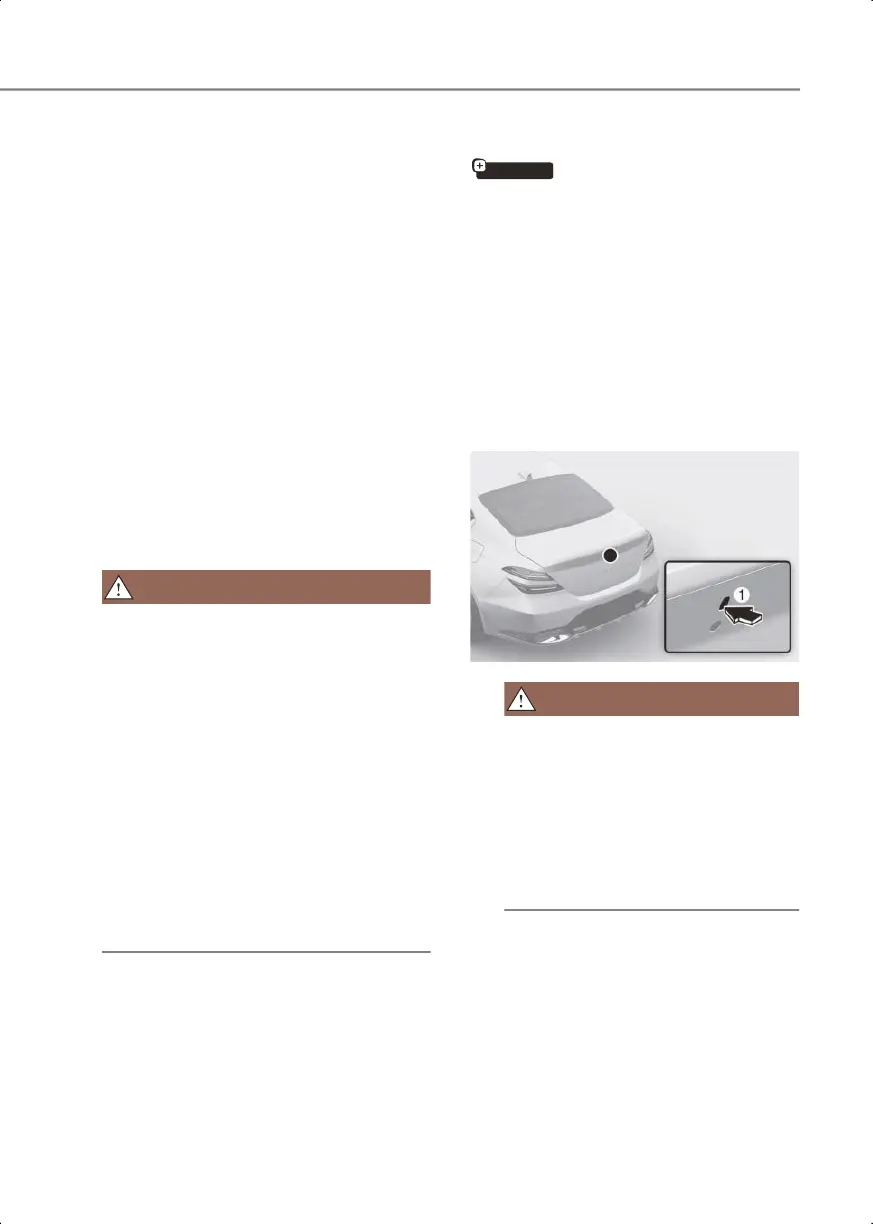5
5-55
Closing the hood
1. Before closing the hood, check in and
around the engine compartment to
ensure the following:
• Any tools or other loose objects are
removed from the engine room area
or hood opening area
• All gloves, rags, or other combustible
material is removed from the engine
compartment
• All filler caps are tightly and correctly
installed
2. Lower the hood halfway (lifted about 12
in. (30 cm) from the closed position)
and push down to securely lock in
place. Then double check to be sure the
hood is secure. If the hood can be
raised slightly, it is not securely locked.
Open it again and close it with more
force.
• Before closing the hood, ensure all
obstructions are removed from around
the hood opening.
• Always double check to be sure that the
hood is firmly latched before driving
away. Check there is no hood open
warning light or message displayed on
the instrument cluster. Driving with the
hood opened may cause a total loss of
visibility, which might result in an
accident.
• Do not move the vehicle with the hood
in the raised position, as vision is
obstructed, which might result in an
accident, and the hood could fall or be
damaged.
if equipped
Non-Powered Trunk
Opening the trunk
1. Make sure the vehicle is shifted to P
(Park) and engage the parking brake.
2. Then do one of the following :
• Press the smart key trunk open
button for more than 1 second.
• Press the button (1) on the trunk itself
with the smart key in your
possession.
Outside
OIK053022
Keep flammable materials away from
the vehicle's exhaust pipe at all times,
especially when using the cargo hitch
carrier. Items such as luggage,
plastics coolers, camping gear, tarps,
and other combustible materials may
ignite if placed too close to the hot
exhaust pipe, and can cause property
damage, injuries, and death.
0_IK_PE_en_US.book Page 55

